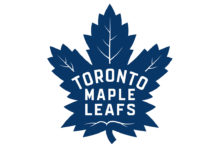For the first time since 2002, the Toronto Maple Leafs hold a lead in a second-round series.
We have to go back a year earlier (2001) to find the last time they won the first game of a second-round playoff series. Step one for not repeating what happened two years ago against the Florida Panthers was “don’t fall into a big hole again,” starting with winning Game 1. The Leafs put together their best five-on-five performance against the Panthers at any point this season, scoring five times at full strength and showing good perseverance to stem the tide of a possible Panthers comeback a couple times en route to a 5-4 win.
Notable Performances from Game 1
William Nylander finished with three points, collecting all of them in the first period, as he got the Leafs off to a soaring start in this series. Nylander took some heat at times for an up-and-down first-round series against Ottawa, but he responded to the critics to close the series out with three points in Game 6 and then did it again with three points in Game 1. He beat Bobrovsky with a shot along the ice five-hole through the John Tavares screen just 33 seconds into the game and then tidily finished off a rebound not too long afterward. Nylander also picked up an assist on the final goal of the first period and generally proved himself to be the biggest game-breaker on the ice. For the Leafs to beat Florida, their top guys have to be better than the Panthers’ top guys. In Game 1, Nylander was the single best “guy” in the game. Nylander’s track record of elevating in big games continues to grow.
Tavares didn’t record a point but did provide the screen on Nylander’s opening goal and won 67% of his faceoffs, while Max Pacioretty picked up assists on both Nylander goals. Patches was perhaps more notable for his physicality, which helped the Leafs not just answer Florida’s heavy game but dictate the physicality from the start (including taking a piece of Barkov that left him wincing). If we generally assume that the Leafs‘ top line will do battle with Florida’s top line (Barkov/Reinhart/Verhaeghe) throughout this series, the second line matchup becomes a big swing factor. Toronto’s second line can be an X factor in Toronto’s favour if they can outplay the likes of Sam Bennett and Matthew Tkachuk on Florida’s second line. In Game 1, they certainly did.
As for the top line, it was a pretty reasonable effort overall. Matthew Knies deserves the most flowers for an amazing finishing on a breakaway in the third period that turned out to be the game-winning goal, a play set up by a cheeky chip by Mitch Marner around the Florida defense. The duo of Marner/Matthews was less impressive than Knies, but they shouldered a big load (both played over 20 minutes), and shots were 9-3 in Toronto’s favour with Matthews on the ice (8-3 with Marner) per Natural Stat Trick. They were effective in closing out the game late on. Most importantly, the goals were 2-0 Toronto in their minutes. The Leafs will need more individual offensive contributions from Matthews/Marner as the series goes along, and Matthews needs to start burying given the calibre of his looks in Game 1, but they did enough in the first game of the series.
It was a bit of a comedown for the checking line of Scott Laughton centering Steven Lorentz and Calle Järnkrok. They were well underwater in the underlying numbers, and while they did draw a couple of penalties, they fell short on their primary objective of “don’t get scored on.” Florida scored on them twice at five-on-five, including the Luostarinen goal in the early third period that opened the door to a comeback. The second goal was more on Joseph Woll than anyone else, but on the first one, Laughton was caught puck-watching as Luostarinen snuck in behind him on the hand-off from Järnkrok. The line has earned some leeway with its first-round performances, but it needs a bounce-back performance in Game 2. This third line of the Panthers is a handful, and it would go a long way if the Leafs’ own can steady the ship in the matchup (to go along with the two goals, the Lundell line out-attempted Laughton’s line 9-0).
The fourth line of Max Domi in between Bobby McMann and Pontus Holmberg flashed some interesting possibilities. As a sheltered scoring line of sorts, the trio is expected to avoid goals against and chip in a couple offensively over the course of the series, and we saw some encouraging signs that they might have it in them this series, at least based on Game 1. Domi went on a breakaway in the third period just before the Knies’ goal, though Bobrovsky denied it by flashing the leather. McMann’s speed down the wing also challenged Florida’s defense on a couple of occasions. A major storyline of this series is Toronto’s ability to hit the Panthers for counter-rushes against Florida’s ultra-aggressive forecheck, and while it remains to be seen how trustworthy and consistent the line will ultimately be, the speed/offensive touch of this line could provide a sneaky element.
On defense, there was a clear four vs. two allocation of minutes, with the top four guys all playing 18-21 minutes and the bottom two playing ~15 minutes. The top pair of Jake McCabe and Chris Tanev played a ton as expected, and while they spent a lot of it in their defensive zone (later in the game, most notably), they came out ahead in actual goals at five-on-five and didn’t give up much in the way of quality. That’s all you can ask for, given the quality of competition they’re facing, as they primarily matched up against Barkov-Reinhart. Tanev’s goal was the gravy on top, coming off a strange knucklepuck from the point that wobbled in past Bobrovsky.
The other two of the big four on defense for the Leafs each contributed to a goal; Morgan Rielly jumped up into a 2v1 rush and ripped it by Bobrovsky, and Oliver Ekman-Larsson activated on an entry, received a pass from Pacioretty, and smartly put a shot-for-rebound on net for Nylander to cash in. Both players’ offensive contributions from the back-end have been terrific for the Leafs this playoffs, as Toronto has flipped the familiar playoff script of its blueline representing an offensive blackhole. Rielly finished as a +3 in the game and played the most among Leafs defensemen at 20:43. Brandon Carlo and Simon Benoit each played just a shade over 15 minutes and limited their mistakes. This Leafs blue line as a whole managed the forecheck of Florida quite well, with support from the forwards.
This brings us to a broader point about Game 1. The top line numbers will not suggest that the Leafs fared particularly well at five-on-five, but much like the Ottawa series, we have to factor in score effects. Toronto dominated Florida in the first period at five-on-five, in a way they haven’t this entire season against the Panthers; given the context, it was one of the more impressive playoff periods in this core’s history. The second period was a little looser defensively, but it was still a strong period at even strength; the Leafs gave up plenty of shot attempts, but little of quality, as Natural Stat Trick recorded the five-on-five high-danger chances at 2-0 Toronto in the middle frame.
The third period is when score effects kicked into gear, with Florida down 4-1 and chasing the game the whole way. To their credit, the Panthers’ game did pick up significantly as the Luostarinen and Balinskis goals in quick succession had them smelling blood in the water. But the shots swung back in Toronto’s favour over the course of the game after the third Panthers goal. Once it got tight again, the Leafs re-found their game, scored a fifth goal, and had enough in the tank to close it out. The top line numbers show expected goals as 53.4%-46.6% for Florida at five-on-five, but actual goals were 5-2 Toronto, and it’s hard for anyone watching this game to conclude the Panthers were the better five-on-five team.
Indeed, it was an excellent performance from the Leafs in that phase of the game. They were more prepared than they seemed in any of the prior Panthers matchups to handle the Florida forecheck, making quick, crisp passes to facilitate breakouts. There were moments were the Panthers hemmed the Leafs in, but that’s natural with any team in the playoffs, let alone this Florida team. The stuck-in-molasses feel to the games from the regular-season series — where the Leafs were chronically unable to execute clean breakouts or move through the neutral zone with possession against Florida’s aggressive press — was mostly not there. The Leafs looked connected, prepared, and played as a unit, with forwards and defensemen in sync to avoid getting gobbled up by the aggression of the opposition’s forecheck. Kudos to the coaching staff for having the team prepared to play this opponent.
Finally, in net, we should talk about both goalies. Anthony Stolarz wasn’t asked to do too much before exiting the game with a (presumed) head injury after he took a shot to the mask and also a blow to the head from Sam Bennett. With Stolarz out, Joseph Woll was cast into a very difficult situation, completely cold in the middle of a game without having played in 18 days. We have to expect rust in that situation, and that is what we got to some degree, as Woll allowed three on 20 shots. The Luostarinen goal was saveable but tricky. The Balinskis goal needed to be stopped, as it was an unscreened defenseman with some distance on the shot. The 6v5 goal late was a wicked double deflection, chalked up mostly to bad luck. It wasn’t Woll’s greatest game, but no one should have expected it to be, and thankfully, it was enough.
Storylines for Game 2
1. Starting the game strong. I wrote about this in my piece after Game 1 of the Ottawa series, but the starts to the series were a frequent issue under Sheldon Keefe. The Leafs rarely scored the opening goal of a series under Keefe, but they’ve now done it two rounds in a row under Craig Berube. Toronto’s first period in this game was dominant, a complete reversal from the sluggish start they got in Game 1 of the series against Florida two years ago. In the previous round against the Senators, the Leafs followed up a blistering start to Game 1 with a rousing start to Game 2 as well, scoring twice in the first 10 minutes. Can the Leafs put together two statement starts in back-to-back games to open a series for the second consecutive round in these 2025 playoffs?
2. The special teams battle, Part 1. I didn’t talk about this in my notable performances because I wanted to give it its own two bullets here. The Panthers won the special teams battle in Game 1, killing off all five Leaf power plays and also netting a power play goal on their own. They had the edge in this game, which is something that the Leafs can’t consistently afford as the series wears on, but I did come away from the game thinking it was doable if the Leafs can stick to their guns.
I think they can break through. Florida has a phenomenal penalty kill; its success against Edmonton’s vaunted power play could be considered the primary reason that Florida won the Stanley Cup last June, so I interpreted the challenges the Leafs faced in that phase in Game 1 as more about the excellence of the Florida PK than the ineptitude of the Toronto PP. Florida’s PK takes away time and space better than anyone. The Leafs will need to really commit to quick puck movement and perhaps a few set-play wrinkles to break the Florida PK press. If they can manage it, they can create numerical advantages down low. The Leafs did get looks in this game on the PP on a few occasions and didn’t give up anything shorthanded. There are ingredients there, but it will be a big challenge.
3. The special teams battle, Part 2. On the flip side, Florida went 1/3 on the power play, scoring on a Seth Jones shot from the point off a low-to-high play from Matthew Tkachuk. Honestly, I was okay giving up that kind of power play goal as it was not a typical Grade-A look off a breakdown, nor did it come off a change of sides pass or anything of that nature. You don’t want to give those up, but you have to accept that a point shot through traffic will happen on the PP over the course of a game. This one was well-placed and went in.
The other two Leafs’ kills were very strong, and it was nice to see that progress continue after a good PK series against the Senators. The PK seems to be settling into a groove with its personnel group, structure, and clearances. They need to keep building momentum.
4. Joseph Woll, (likely) starting goalie. Given the physical condition of Anthony Stolarz at the end of Game 1, it was difficult to envision Stolarz playing in Game 2, although it hasn’t been ruled out by the Leafs’ coaching staff. Assuming Woll starts, few teams in the Stanley Cup Playoffs this season had a “backup” close to as good as their starter, and most of the teams that did were ones who don’t have any particularly good starting goalies, like Edmonton with Calvin Pickard and Stuart Skinner. The Leafs’ two-good-options luxury in net is coming in handy at the most important time of year.
Woll wasn’t special in Game 1, but he wasn’t expected to be, considering the circumstances. If Stolarz misses time of note, though, Woll will probably need to be special in a game or two at some point. We’ve seen that it is very much in Woll’s wheelhouse, as he entered the 2025 playoffs with a career .933 save percentage in seven career playoff appearances, with a 1.78 GAA to go with it. He relieved Ilya Samsonov against Florida in 2023 after Samsonov’s injury and posted a .921 SV% in those three games. Woll can win playoff games against the Panthers; it’s in his past. It would be nice if it were in his future, too, starting in Game 2.
5. The rough-housing and Florida’s response to the Game 1 loss. The Leafs stayed on the right side of the line while doling out plenty of physical punishment in Game 1, laying the boom on several occasions (chief among the examples — McCabe laid out Kulikov, Pacioretty nailed Barkov, and Domi leveled Tkachuk). They weren’t pushed around by any stretch and even dictated the physicality at points. Perhaps the only missed opportunity is that the game was too close in the late third period for anyone to go after Bennett as retribution for Stolarz. Someone for Toronto will need to settle that score early in the game, if Bennett agrees to a fight, but letting it drag as a distraction — and potentially a source of ill-discipline — well into the game is to be avoided. Otherwise, the Leafs weren’t goaded into taking a bad penalty by Florida’s tomfoolery, besides a phantom call on Domi.
Florida won’t really be looking to “respond” to the Game 1 loss physically, because they are always really physical, if not downright dirty. But their response in Game 2 is a main storyline. Last year, in the first game of round two, the Boston Bruins surprisingly went into Sunrise and achieved a 5-1 win over the Panthers. Florida responded by bludgeoning Boston in Game 2, winning 6-1 while outshooting Boston 33-15 in that game. We can also think back to the 2022 series between Toronto and Tampa, or the 2019 series between Toronto and Boston. Both series saw the Leafs win Game 1, before the opposition responded with a decisive Game 2 win. Championship-calibre teams (both of those teams went to the Stanley Cup Final that year) often respond in a big way in Game 2 after losing the opening game of the series. The Leafs will need to be ready for Florida’s figurative (and maybe literal) best punch in Game 2.

































